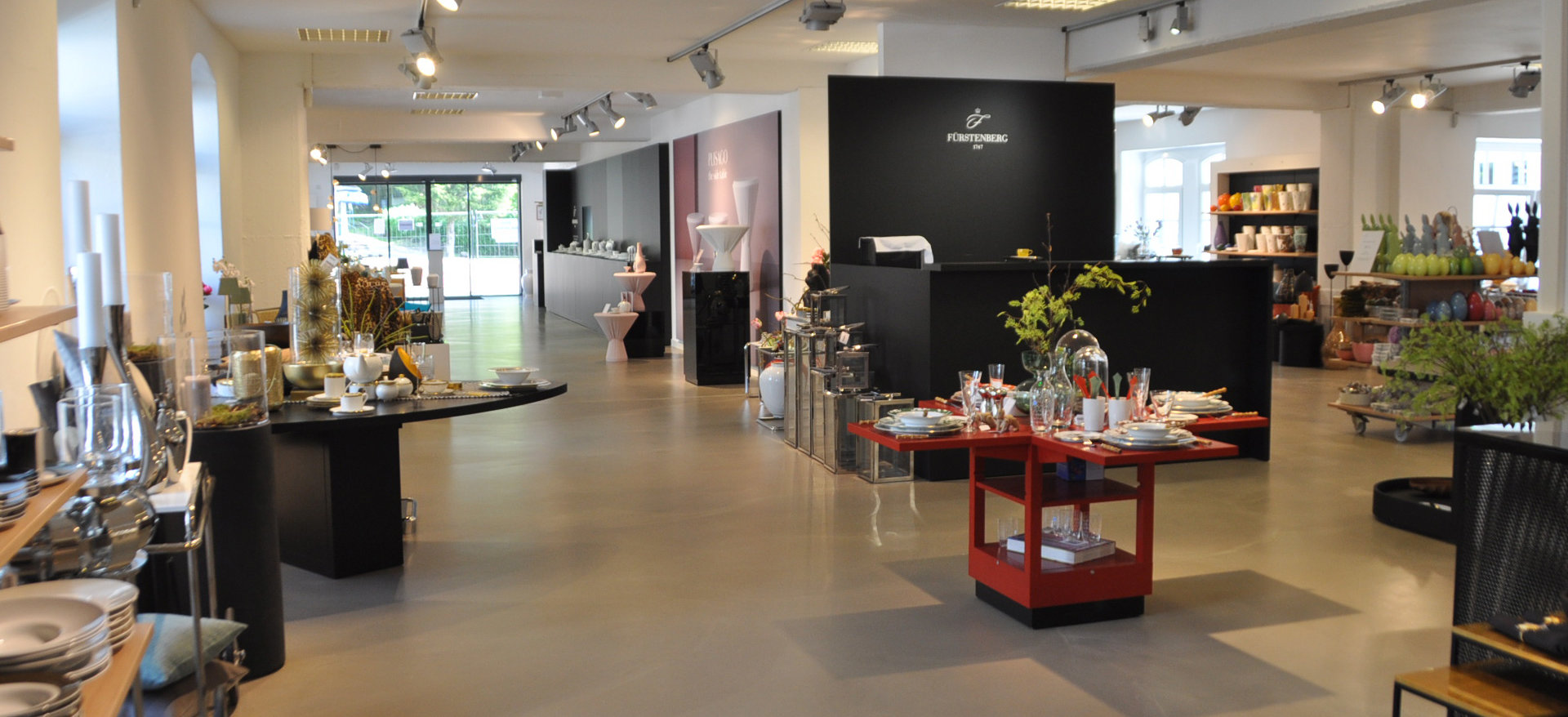
Frequently asked questions
Learn more about porcelain from FÜRSTENBERG
Porcelain is a fine ceramic product made by firing from a mixture of kaolin (porcelain clay), feldspar and quartz. Kaolin is the malleable component in the porcelain mass. It gives the outer shape and also the white color. Quartz is the framework of porcelain. It gives the porcelain its stability during the firing process. Feldspar is decisive for the density of the porcelain. As a flux, it lowers the melting point of quartz and kaolin during the firing process.
Porcelain is a fine ceramic product made by firing from a mixture of kaolin (porcelain clay), feldspar and quartz. Kaolin is the malleable component in the porcelain mass. It gives the outer shape and also the white color. Quartz is the framework of porcelain. It gives the porcelain its stability during the firing process. Feldspar is decisive for the density of the porcelain. As a flux, it lowers the melting point of quartz and kaolin during the firing process.
Translated with DeepL.com (free version)
It is the small details that reveal genuine porcelain artistry and give FÜRSTENBERG porcelain its special value: double-walled vessels whose wafer-thin inner and outer walls can be assembled by hand alone; decorations that converge under the handle, or gold embellishments that run over the rim (e.g. a cup rim) and can only be realized as hand painting.
"Over a thousand years ago, the Chinese discovered white clay on Mount Gaoling and named it "kaolin" after the mountain. The city of Jingdezhen, which is still a center of porcelain production today, was built at the foot of the mountain. At that time, very little porcelain reached Europe, where it was therefore considered a wondrous curiosity."
It takes months to years for an idea to become a finished product. It all starts with a drawing. Only after many meetings, rehearsals and corrections is the model ready for production. The production process itself also takes several days. As we say at FÜRSTENBERG, an article passes through 100 hands: from turning or casting the porcelain mass in plaster molds, to garnishing and plastering, annealing firing, decorating, glazing, smooth firing and the final finishing touches and polishing.
"Ceramics consist mainly of clay, which is fired at around 600° C. Ceramic tableware has a coarser structure and is usually more traditional and rustic.
Porcelain, such as that from FÜRSTENBERG, has a fine structure and is harder and less delicate due to firing at up to 1,400°C. Porcelain is the higher quality product due to the rarer occurrence of the required raw materials and the complex manufacturing process."
"White, shiny, translucent and hard - these are the properties associated with porcelain. It is only through firing that the mixture of kaolin, quartz and feldspar becomes the coveted material. This is because the feldspar only melts and dissolves the other components at extremely high temperatures. This compacts the body and gives it its hardness and translucency.
The porcelain passes through the hellish flames of the kiln twice: this is known as annealing and glost firing. During annealing firing, the body solidifies and becomes insoluble in water. The actual melting process - sintering - takes place at up to 1,400 degrees in the glost firing. Both firings take around 13 hours including cooling time."
"Porcelain has very special properties: In addition to its extreme hardness - one square centimetre of porcelain can withstand a pressure load of five tons - it is also tactile, translucent and brilliant white.
As a poor conductor of heat, porcelain is cool to the touch; glazed surfaces are smooth, while polished surfaces appear almost velvety soft. Translucency is a unique characteristic of porcelain. This effect appears differently depending on the thickness of the body. Very fine and thin shards already allow daylight to shine through.
Another special feature of FÜRSTENBERG porcelain is that all items have the same degree of whiteness, allowing different collections to be combined individually."
"In Europe - as well as at FÜRSTENBERG - it is mainly hard porcelain that is produced, in China it is mainly soft porcelain. Due to a higher kaolin content and higher firing temperatures, the glaze surfaces of hard porcelain are harder and the body is particularly strong. 50 to 60 percent bone ash or calcium phosphate is used in bone china porcelain. A special feature is the translucent body and the bright white color.
Cookie porcelain is fired without a glaze. Its special features are a marble-like appearance and a rougher surface."
Porcelain production began in China as early as the 9th century. Traders imported it to Europe from the 17th century onwards. The secret of its production was closely guarded.
In the 18th century, Germany succeeded in producing its own porcelain. In 1747, the FÜRSTENBERG porcelain manufactory was founded, which is now Germany's second oldest porcelain manufactory.
The merchant Marco Polo was the first to report on Chinese porcelain. He named it after the cowries, Italian porcellana, as it was believed that porcelain was made from their shells.
